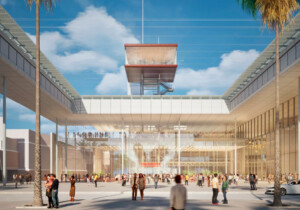Although rescue teams are still in the process of recovering the injured and deceased from the rubble, Italian prime minister Matteo Renzi has announced that acclaimed Italian architect Renzo Piano will lead the country’s recovery from a disastrous 6.2-magnitude earthquake that struck the towns of Amatrice, Accumoli, and Pescara del Tronto on August 24th.
Piano, who was appointed an Italian senator for life in 2013, has deep experience working with UNESCO and in earthquake zones from Japan to California. He will be joined in his task by local governor Vasco Errani of Emilia Romagna, who has been appointed as a special commissioner to oversee post-quake reconstruction. Errani headed a similar reconstruction effort after a series of earthquakes rocked his region in 2012, leaving 27 dead as well as thousands without homes.
Piano’s reconstruction plan features a three-pronged approach.
First, over the next six months 2,900 displaced residents—currently occupying 58 tent encampments—will move to semi-permanent, lightweight wooden shelters. Second, Piano projects taking six to eight months to rebuild the affected areas.
The third prong of Piano’s plan involves bolstering seismic regulations across the country, with the goal of making existing structures like homes, public buildings, and cultural sites more earthquake resistant.
Piano spoke with The Guardian, underlining the urgency of the developing situation, saying, “We have to act quickly, with the utmost urgency. Anti-seismic requirements must be inserted in the laws of the country to make our homes safe, just as it’s compulsory for a car to have brakes that work.”
As has been true in previous, large-scale earthquake events, unreinforced and masonry structures are often to blame for a large percentage of overall deaths. Italy, with its large stock of old and ancient brick structures, as well as a thriving informal construction culture, is especially susceptible to seismic events.
The improvement of seismic regulations is an intergenerational project Piano envisions taking place over the next 50 years. Piano went on to tell The Guardian, “We are speaking about the ridge of the Apennines, the backbone of Italy from north to south, an operation projected over 50 years and two generations,” he said. “We are talking about millions of buildings, it is not impossible if you work through generations.”










